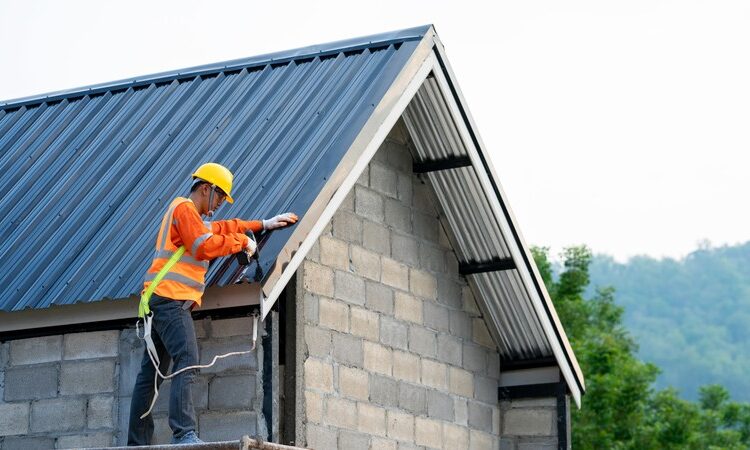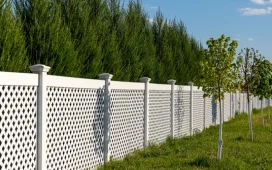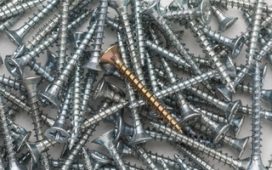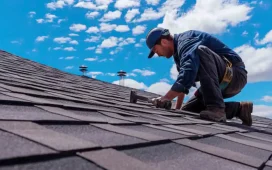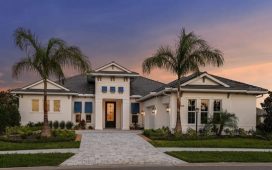Why Roof Inspections Are Essential
Regular roof inspections are essential for maintaining the condition and integrity of your roof. They play a crucial role in identifying any potential issues and allowing for timely repairs or maintenance. Without regular inspections, problems can go unnoticed and worsen over time, leading to more extensive and costly repairs.
Roofs are constantly exposed to the elements, including harsh weather conditions, UV radiation, and temperature fluctuations. Over time, these factors can cause wear and tear on the roof materials, leading to deterioration and potential damage. Regular inspections help detect these issues early on, preventing further damage and extending the lifespan of your roof by roof installation los angeles.
The Benefits of Regular Roof Maintenance
Increase Roof Lifespan
One of the key benefits of regular roof maintenance is the increased lifespan it provides for your roof. By identifying and addressing any issues promptly, you can prevent small problems from turning into major ones. This proactive approach helps to maintain the structural integrity of your roof and ensures it lasts longer.
Minimize Repair Costs
Regular roof maintenance can help minimize repair costs in the long run. By addressing minor issues early on, you can prevent them from escalating into more significant and expensive problems. It is often more cost-effective to perform preventative maintenance than to deal with extensive repairs or roof replacements.
Prevent Structural Damage
A well-maintained roof is essential for protecting the structural integrity of your home or building. By regularly inspecting and maintaining your roof, you can identify and address any areas of weakness or damage. This proactive approach helps prevent potential structural damage caused by water leaks, rot, or other issues that could compromise the stability of your property.
Improve Energy Efficiency
A properly maintained roof can contribute to improved energy efficiency in your home or building. Inspections and maintenance help identify any gaps, leaks, or insulation issues that could result in energy loss. By addressing these problems and ensuring proper sealing and insulation, you can minimize heat loss in winter and reduce cooling demands in summer, leading to energy savings.
Maintain Aesthetic Appeal
The condition of your roof has a significant impact on the overall aesthetic appeal of your property. Regular maintenance and inspections can help keep your roof looking its best. By addressing issues such as discoloration, moss or algae growth, or damaged shingles, you can maintain the visual appeal of your roof and enhance the curb appeal of your home or building.
Common Problems Found During Roof Inspections
Leaking Roof
A leaking roof is one of the most common problems found during roof inspections. It can be caused by various issues, including damaged shingles, deteriorated flashing, or clogged gutters. Prompt identification and repair of the source of the leak are essential to prevent further damage to the roof and the interior of the property.
Damaged or Missing Shingles
Damaged or missing shingles are another common issue that may be discovered during roof inspections. Shingles can become cracked, curled, or displaced due to age, weather exposure, or improper installation. Addressing these issues promptly is crucial to prevent water infiltration and protect the underlying roof structure.
Roof Rot or Decay
Roof rot or decay can occur over time, particularly in areas with high humidity or excessive moisture. It can weaken the roof structure and compromise its integrity. During roof inspections, signs of rot or decay, such as soft or sagging areas, may be detected. Timely repairs or replacement of affected sections can prevent further damage and ensure the durability of the roof.
Clogged Gutters and Drainage Issues
Clogged gutters and drainage issues can lead to water backup, which can cause damage to the roof and the property’s foundation. During roof inspections, the condition of the gutters, downspouts, and drainage systems should be assessed. Clearing any debris and ensuring proper water flow away from the roof is essential for preventing water-related problems.
Flashing Problems
Flashing refers to the material used to seal joints and prevent water penetration in areas such as roof valleys, chimneys, skylights, and vents. Damage to the flashing can lead to water leaks and structural damage. Roof inspections help identify any flashing problems, such as cracks, gaps, or deterioration, allowing for timely repairs or replacement.
The Role of Preventative Maintenance in Extending Roof Lifespan
Preventative maintenance plays a crucial role in extending the lifespan of your roof. By regularly inspecting and addressing any issues, you can prevent minor problems from escalating and causing significant damage. During preventative maintenance, potential problems are identified and addressed, ensuring the roof remains in good condition and can withstand the elements.
Preventative maintenance tasks may include cleaning gutters, removing debris, inspecting and repairing flashing, checking for damaged shingles, and ensuring proper insulation and ventilation. These proactive measures help maintain the roof’s integrity, improve its durability, and extend its lifespan.
Recommended Frequency for Roof Inspections and Maintenance
The recommended frequency for roof inspections and maintenance depends on several factors, such as the age of the roof, its condition, the climate, and the type of roofing materials used. In general, it is recommended to have a professional roof inspection at least once a year. Additionally, it is advisable to perform inspections after severe weather events, such as storms or heavy rainfall.
Regular maintenance tasks, such as gutter cleaning and debris removal, should be performed at least twice a year, ideally in spring and fall. It is also important to have a professional inspection performed before and after any major roof repairs or renovations.
Signs That Indicate the Need for Immediate Roof Inspection
Water Stains on Ceilings or Walls
Water stains on ceilings or walls may indicate a roof leak. If you notice any discoloration or water marks, it is essential to have a professional inspect your roof to identify and address the source of the leak promptly.
Visible Leaks or Drips
If you notice visible leaks or drips coming from the ceiling during rainfall, it is a clear sign that there is a problem with your roof. Immediate inspection and repair are necessary to prevent further damage.
Sagging or Bowing Roof
A sagging or bowing roof is a serious structural issue that requires immediate attention. It can be caused by various factors, including roof rot, water damage, or inadequate support. A professional inspection is necessary to assess the extent of the problem and determine the appropriate repairs.
Mold or Mildew Growth
Mold or mildew growth on the interior or exterior surfaces of your property may indicate a roofing problem, such as a leak or poor ventilation. It is important to have a roof inspection to identify and address the underlying issues to prevent further mold growth and potential health hazards.
Loose or Missing Shingles
If you notice loose or missing shingles on your roof, it is a sign of potential damage or wear. Immediate inspection and repairs are necessary to prevent water infiltration and protect the underlying roof structure.
When to Call a Professional Roofing Contractor
While some minor maintenance tasks can be performed by homeowners, it is advisable to call a professional roofing contractor for more complex inspections and repairs. A professional contractor has the knowledge, experience, and specialized equipment to assess the condition of your roof thoroughly.
It is particularly important to call a professional roofing contractor if you notice any signs of roof damage, such as leaks, missing shingles, sagging, or mold growth. They can accurately diagnose the problem and recommend the appropriate repairs or maintenance measures to restore your roof’s integrity.
Neglecting Roof Inspections and Maintenance
Neglecting roof inspections and maintenance can have serious consequences for your property. Without regular inspections, minor issues may go unnoticed and develop into major problems over time. Water leaks, structural damage, and premature roof failure are just a few of the potential consequences of neglecting roof inspections and maintenance.
The cost of repairs and the inconvenience caused by significant roofing problems can far outweigh the time and cost investment of regular inspections and preventative maintenance. Taking a proactive approach to roof care can save you money, protect your property, and extend the lifespan of your roof.
The Cost Savings of Regular Roof Inspections and Maintenance
Regular roof inspections and maintenance can result in significant cost savings over time. By identifying and addressing minor issues early on, you can prevent them from escalating into more extensive and expensive repairs.
Timely maintenance tasks, such as cleaning gutters and clearing debris, can also help prevent water backup and damage. By ensuring proper drainage and water flow, you can avoid potential water-related problems that could result in costly repairs or replacements.
Additionally, regular roof maintenance helps to extend the lifespan of your roof. By maximizing its durability and protecting it from damage, you can delay the need for a costly roof replacement. Investing in regular inspections and maintenance can save you money in the long run and preserve the value of your property.
The Impact of Weather on Roof Integrity
Weather conditions can have a significant impact on the integrity of your roof. Extreme temperatures, strong winds, heavy rainfall, snow, and ice can all cause damage to your roof over time.
Excessive heat and UV radiation can cause roof materials to deteriorate. Prolonged exposure to heavy rain or snow can lead to water penetration and contribute to mold growth or structural damage. Strong winds can lift or displace shingles, making the roof susceptible to leaks.
Regular inspections help assess the impact of weather on your roof and identify any damage caused. By addressing weather-related issues promptly, you can protect the integrity of your roof and ensure its longevity.

